Complete STIHL Guide: Understanding Models, Serial Numbers, and Technologies
- February 21, 2024
- 2 comment
Stihl’s comprehensive range of machinery is designed to meet the needs of various industries, offering diverse models and variations. Identifying the correct model number is crucial for finding the appropriate parts for any Stihl machine. The model number, often found via the serial number, is the most reliable method for identifying spare parts. However, when the serial number is worn off or missing, understanding the model variations and the significance of letters in the model name becomes invaluable.
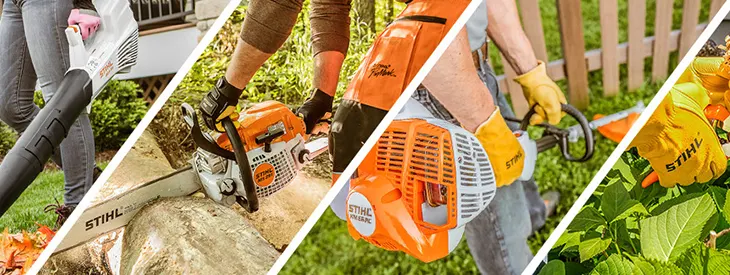
For instance, the distinction between the BG 56 and BG 56C-E leaf blowers lies primarily in the recoil area, attributed to the ErgoStart system, while other parts of the machine remain largely unchanged. Without consulting the parts diagram, one can deduce that the BG 56 and BG 56-Z will have different exhausts, as ‘Z’ signifies the inclusion of a spark arrest muffler.
Interesting Fact
The naming conventions of Stihl machines, though seemingly arbitrary, have meaningful origins. The model abbreviations correspond to German terms, revealing the machine’s purpose:
- MS (Motosäge): Chainsaw
- FS (Freischneider): Line Trimmer
- BG (Blasgerät): Handheld Blower
- BR (Blasgerät Rückentragbar): Backpack Blower
- TS (Trennshleiffer): Cut Off Machine
Expanded Key to Stihl Model Numbering Conventions
| Code | Meaning | Applies To |
|---|---|---|
| C-B | Quick Chain Tensioner | |
| C-E | ErgoStart/Easy2Start system | |
| C-F | Electric Starter | |
| C-M | Stihl M-Tronic system | |
| C-Q | Quick Stop Super brake | |
| I | STIHL Injection system | |
| K | Short Shaft (HL) | HL models |
| R (FS) | Loop Handle | FS models |
| R (HS) | Cutting Blade for heavy-duty cutting | HS models |
| T (MS) | Top Handle (Chainsaws) | MS models |
| T (FS, FR) | Split Drive Tube (Brushcutters) | FS, FR models |
| T (HS) | Trimming Blade | HS models |
| X | Lightweight Versions | |
| -A | Electronic Water Control | |
| -D | Catalytic Converter | |
| -K | Long Shaft (Brushcutters) | FS models |
| -N (MS) | Low Compression | MS models |
| -N (FS) | Low Noise | FS models |
| -R | Wrap-Around Handle (Chainsaws) | MS models |
| -V | Carburettor Heating | |
| -W | Handle Heating | |
| -Z | Spark Arrester Muffler |
Stihl Chainsaw Production Years by Model and Intended User
Early Professional Models (1926-1950)
The initial lineup, including models like BL, L, A, B, C, D, E, F, G, H, K, M, R, S, and Z, established the foundation for Stihl’s professional-grade chainsaws.
Mid-Century Innovations (1959-1969)
The introduction of the Contra and Super Contra models marked significant advancements in power and functionality for professional use.
Expansion into Homeowner Market (1965-1995)
Models such as 08 S, 010, 011, and 015 catered to homeowner needs, offering reliable and user-friendly options for residential property maintenance.
Arborist Specialized Tools (1996-2019)
The MS 150 TC-E, MS 192 T C-E, and MS 201 TC-M models were specifically designed for arborist applications, highlighting Stihl’s commitment to specialized tree care.
Late 20th Century Professional Models (1964-2001)
This period saw the release of models like 070, 075, 044, 046, 056, 064, and 066, which continued to advance the capabilities available to professional users.
Introduction of Electric Models (1984-2010)
The E 10, E 14, MSE series, and others represented Stihl’s foray into electric chainsaws, offering alternatives to traditional gas-powered models.
Advent of Battery-Powered Chainsaws (2010-Present)
The MSA series, including models like MSA 160 C-BQ and MSA 200 C-BQ, reflects the latest in battery technology for both professional and homeowner use.
Modern Professional and Specialized Models (2010-Present)
Recent years have introduced high-end models like MS 500i, MS 661 C-M, and specialized units for farm, ranch, and rescue operations, showcasing ongoing innovation and specialization in Stihl’s offerings.
Production Years of Stihl Chainsaws By Series
Early Series (1952-1966)
Series 110 and 1102 introduced models like BL and BLK, marking the early days of Stihl’s innovations tailored for professional use.
Contra Series (1959-1977)
Series 1106 featured significant advancements with models like Contra 06 and 070, catering to heavy-duty professional applications.
Mid-Century Models (1961-1994)
Series 1107 to 1114 expanded the range with models like 08, 08S, and 020, including the 090G for specialized tasks, emphasizing versatility for both professional and homeowner use.
Late 20th Century Developments (1969-2009)
Series 1110 to 1120 continued to innovate with models such as 041, 051, and the Mini Boss series, adapting to evolving demands in power and functionality.
Modern Chainsaws and Specialized Tools (1980-Present)
Series 1119 and 1123 introduced models like 038 MAGNUM and MS 210-250 series, meeting the modern standards of efficiency and environmental friendliness.
Electric Chainsaw Evolution (1967-2022)
Transitioning from Series 1202 to 1210, Stihl embraced electric technology with the E series and MSE series, highlighting the shift towards sustainable and quieter operations.
Battery-Powered Revolution (2014-Present)
Series 1252 represents the latest in cordless technology with the MSA series, offering powerful, emissions-free options for a range of users.
How Can I Determine the Manufacturing Year of my STIHL Chainsaw?
To find out the production year of your Stihl chainsaw, you should examine the serial number, which encodes details about the manufacturing date, model, and engine type. This serial number is generally positioned on the right side of the chainsaw, close to the muffler area. It comprises a mix of letters and numbers, stretching between 9 to 11 characters in length. By consulting a specific webpage designed for decoding Stihl chainsaw serial numbers, you can effortlessly translate this serial number into valuable information about your chainsaw’s production year, enhancing your knowledge about your equipment and aiding in its maintenance or parts replacement.
Conclusion
Stihl’s evolution from its foundational models in the 1920s to the innovative electric and battery-powered chainsaws of today showcases the brand’s commitment to innovation, quality, and sustainability. Catering to professionals, homeowners, and arborists alike, Stihl has consistently expanded its product line to meet diverse market needs, emphasizing efficiency and environmental friendliness. The ability to decode Stihl chainsaw serial numbers for maintenance and part identification further highlights the brand’s dedication to user satisfaction and product longevity. In summary, Stihl’s leadership in the chainsaw industry is marked by its ongoing technological advancements, ensuring reliability and performance across its extensive range of products.
FAQs
- What does the letter “C” indicate in Stihl model numbers?
The letter “C” in Stihl model numbers signifies special features, such as the Quick Chain Tensioner (C-B), ErgoStart/Easy2Start system (C-E), Electric Starter (C-F), and the Stihl M-Tronic system (C-M), enhancing the functionality and user experience of Stihl machines. - How can I tell the manufacturing year of my Stihl chainsaw from its serial number?
The serial number, found on the right side of the chainsaw near the muffler, encodes the manufacturing date, model, and engine type. By decoding this number through Stihl’s specific online tools or resources, you can determine the production year of your chainsaw. - What is the significance of the letter “Z” in Stihl model names?
The letter “Z” in a Stihl model name indicates the inclusion of a spark arrestor muffler, a safety feature that helps prevent the emission of flammable debris, reducing the risk of fire. - Can I identify a Stihl machine’s parts without its serial number?
Yes, understanding the model variations and the significance of letters in the model name can help identify parts. For instance, differences in exhaust systems, handles, and other features can be deduced from the model name even when the serial number is missing. - What does “MS” stand for in Stihl chainsaws, and how does it reflect the machine’s purpose?
“MS” stands for “Motosäge,” which is German for chainsaw. This abbreviation reflects the machine’s purpose and roots in Stihl’s German engineering and design philosophy. - How did Stihl chainsaws evolve in terms of power source from the company’s inception to the present?
Stihl’s chainsaw lineup has evolved from gas-powered models in its early years to introducing electric models in the 1980s and, most recently, battery-powered chainsaws in the 21st century, reflecting the brand’s commitment to innovation and sustainability. - What are the unique identifiers for Stihl models designed specifically for arborists?
Models designed for arborists, such as the MS 150 TC-E, MS 192 T C-E, and MS 201 TC-M, are indicated by their model numbers, which include “T” for top handle and “C” for features like the ErgoStart system, tailored to meet the specific needs of tree care professionals. - How does Stihl’s naming convention reflect the machine’s intended use or special features?
Stihl uses a detailed naming convention where each letter and number provides information about the machine’s intended use, power source, and special features, making it easier for users to identify the right equipment for their needs. - Are there any Stihl machines that cater specifically to homeowner needs, and how are they identified?
Yes, Stihl offers models such as the 08 S, 010, 011, and 015, which are designed for homeowner use, offering user-friendly options for residential property maintenance. These models are identifiable by their simpler model numbers and features tailored for non-professional use. - What advancements have been made in Stihl chainsaws for professional users in recent years?
Recent years have seen the introduction of high-end models like the MS 500i and MS 661 C-M, which incorporate advanced technologies such as fuel injection and the M-Tronic system, showcasing Stihl’s ongoing innovation and specialization for professional applications.
We hope this guide has illuminated the intricacies of Stihl’s model numbers, serial numbers, and technologies for you! Your thoughts and experiences are incredibly valuable to us and the community. Whether you’re a seasoned professional or a curious homeowner, we’d love to hear from you. Share your insights, ask questions, or simply drop a comment below to join the conversation. Don’t forget to share this article with fellow Stihl enthusiasts. Let’s keep the discussion going and help each other make the most of our Stihl machinery. Happy cutting!

David Murray
Forestry AuthorI'm David Murry, a forestry equipment specialist with a focus on chainsaw operation. With over 13 years of experience, I've honed my skills in operating and maintaining a wide range of machinery, from chainsaws to log splitters. My passion for the outdoors and commitment to sustainable forestry drive my work, which emphasizes safety, efficiency, and staying updated with industry advancements. Additionally, I'm dedicated to sharing my expertise and promoting environmental awareness within the forestry community.
2 comments
U may have explained what I'm going to ask if so I apologize! David I have had a couple chainsaws (sticks) that have had parts switched out on them I've the numbers on each individual parts is 1 of those set of numbers a serial number or is that the part number or both ! Guess I'm asking. Can I get numbers off of bars if I can still read & other parts ! Stihls I have r 191,211,ms250,026pro,Ms 290,& ms180 pretty sure last 2yrs ever saw has had a part or 2switched 291even switched completely to where I ran 1day & 2 days later tried firing it up & had no compression! Anyway just won't if I can get a serial number off individual parts & maybe it will or they will go back to other saw ! Don't believe my 026pro actually is a pro026 pro any more! I know it had metal. Coverings. It has plastic now!

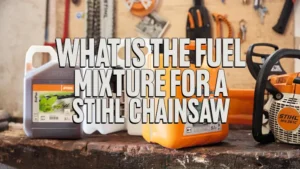
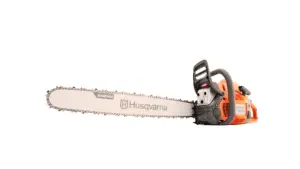


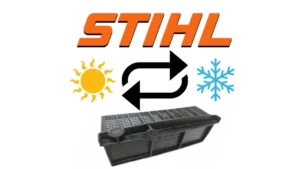
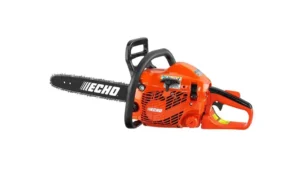

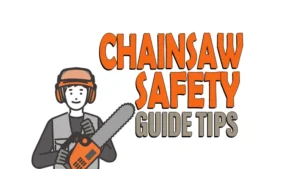

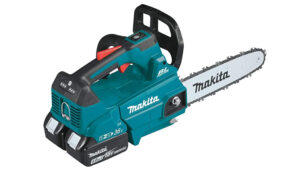

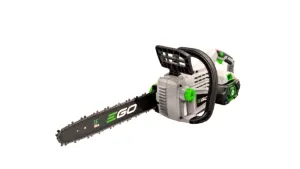
One more thing needs to be shown to the buyer......... 'Where the machine is made'.... I might accept that many countries make the gear but one thing I'll never accept is buying a chainsaw which has been made in Xhina..... No apologies for this. Its my money. The customer is always right. Correct me if I'm wrong but I believe that engine numbers beginning with 8 are Xhinese mad?
Tom Tee
April 19, 2024 5:38 am